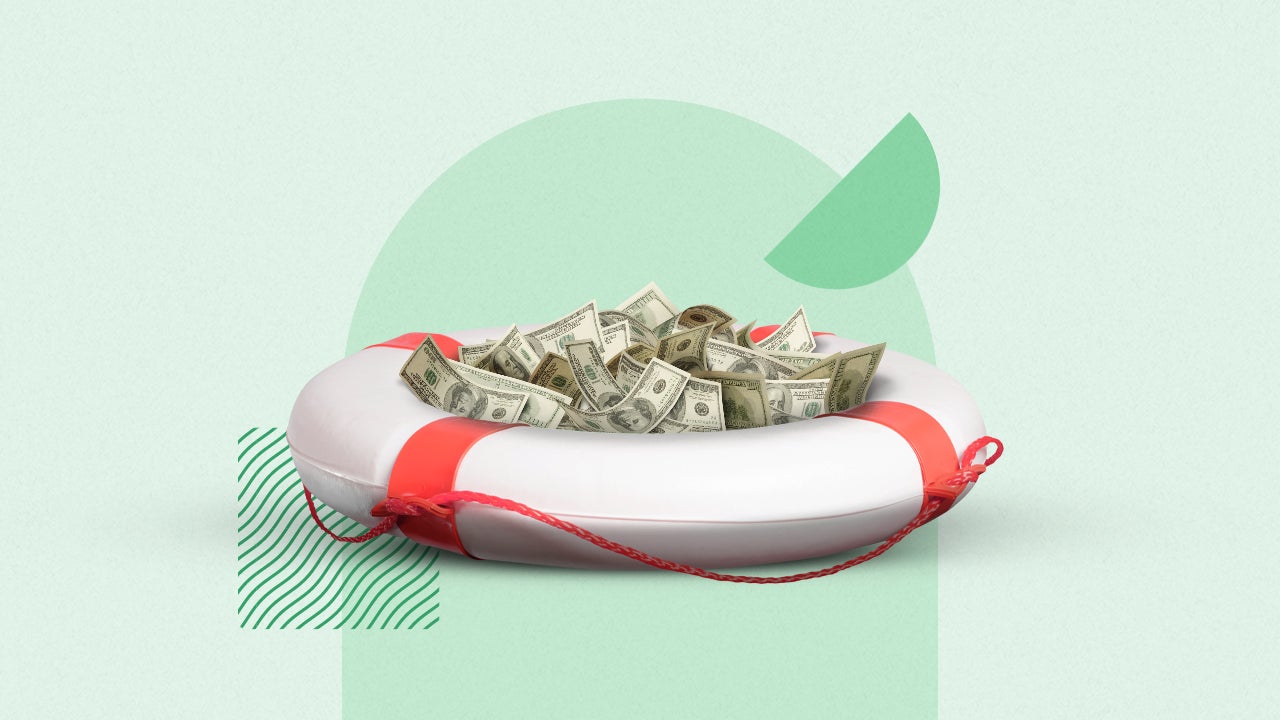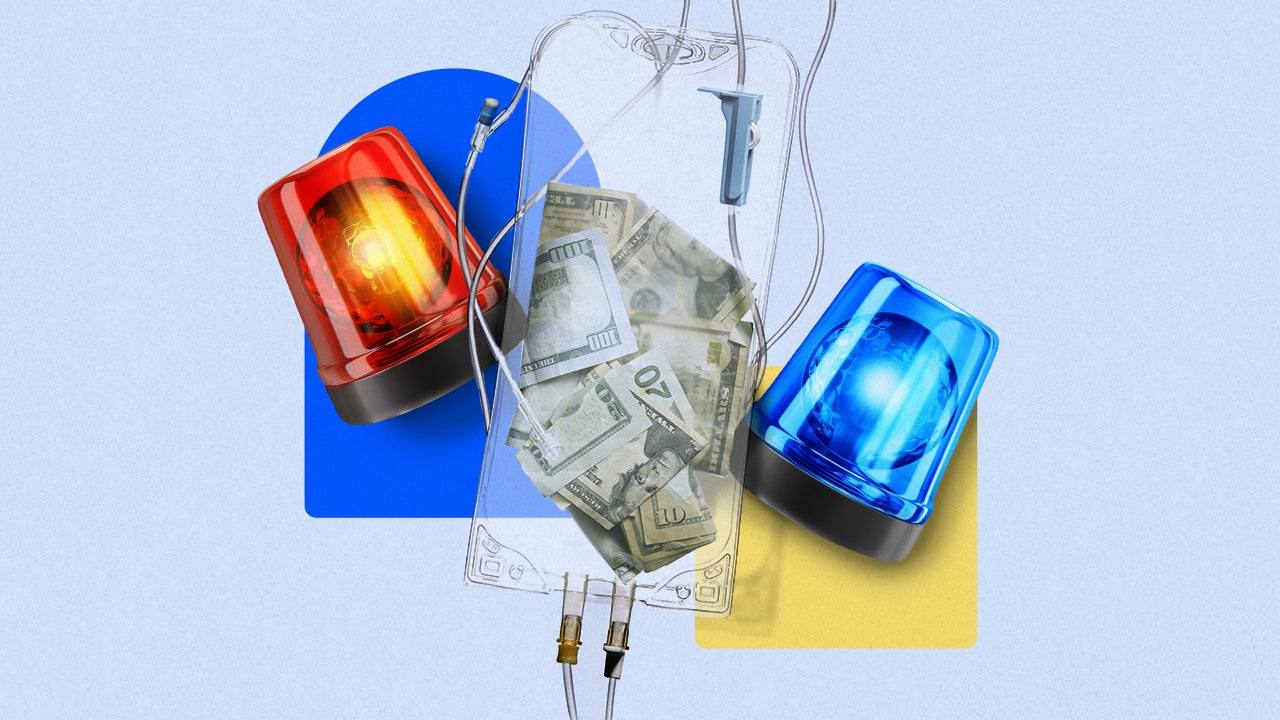How to start (and build) an emergency fund

Key takeaways
- An emergency fund provides a financial protection for unexpected expenses, such as medical bills, car repairs or during a job loss.
- Saving three to six months’ worth of essential expenses is often recommended, but individual circumstances may require saving more or less.
- Automating savings and using strategies including budgeting and saving windfalls (such as a tax refund or bonus) can help you start, grow or rebuild your emergency fund over time.
Suppose you’re unexpectedly called into your boss’s office one day and given the tough news that you’re getting laid off. Panic sets in as you think about bills, rent and putting food on the table.
It’s a situation that many of us fear. Unexpected events such as job loss, medical emergencies and car repairs can happen to anyone, without warning or time to prepare. But there’s one hack that can give you some peace of mind in advance of these events: having an emergency fund.
An emergency fund isn’t just about money — it’s about not having to worry constantly about possible setbacks, knowing you have a safety net to catch you if you stumble. Yet, according to Bankrate’s 2025 Annual Emergency Savings Report, only 41 percent of Americans could afford to cover an expense of $1,000 or more from their savings.
If you find yourself uncomfortable with your emergency savings or lacking an emergency fund altogether, here’s how to start an emergency fund to stave off financial worries.
What is an emergency fund?
An emergency fund is money in a bank account that’s set aside for unplanned expenses, such as an unanticipated dental or medical bill or home or auto repairs. An emergency fund can also help you weather a loss of income from job loss or extended illness.
Serving as a financial cushion, an emergency fund helps you breathe easier, knowing you can handle life’s curveballs without going into debt. It reduces the need to rely on high-interest credit cards or costly personal loans to pay for sudden expenses.
By nature, unplanned expenses are unexpected, so the sooner you’re prepared the better off you’ll be when the inevitable happens.— GREG MCBRIDE, CFA, BANKRATE CHIEF FINANCIAL ANALYST
Why an emergency fund is so important
An emergency fund is an essential part of a solid financial plan. It can help you pay unexpected expenses and avoid taking on debt from high-interest credit cards or loans.
Not having enough emergency savings can also cause a sense of financial anxiety. More than half (59 percent) of Americans are uncomfortable with their level of emergency savings, and 46 percent of Americans are very worried that they wouldn’t be able to cover their immediate living expenses over the next month if they lost their job tomorrow, according to Bankrate’s survey.
If hit with an unplanned $1,000 expense, 41 percent of people would pay it with their savings, compared with 25 percent who would pay with a credit card, 13 percent who would pay it but have to cut other spending, 13 percent who would borrow from family or friends and 5 percent who would take a personal loan.
The findings reaffirm the need for households to have a well-funded stash of cash and that it’s never too soon to start saving for an emergency.
Without an emergency fund, your only options may be credit cards, personal loans or asking relatives or friends for money.
How much to save in your emergency fund
How much you need in an emergency fund depends on your unique situation, but experts recommend saving three to six months’ worth of essential expenses. These expenses typically include housing, utilities, transportation, food and debt payments. However, individual circumstances may affect your savings goal.
Personal finance is personal. What might be right for one person may not be the best option for another. It’s good to listen to financial experts and understand why they advocate saving a certain amount, but ultimately what matters is whether you’re comfortable with your emergency savings. That could mean two years or two months of emergency savings, depending on your goals. As long as your savings doesn’t sabotage other financial goals, set aside whatever you need to avoid worrying about paying for the unexpected.
If you’re self-employed, have an unstable income or are the sole provider in your household, aim for nine to twelve months’ worth of expenses to cover any gaps caused by income fluctuations or unexpected emergencies.
For example, the average household spends $77,280 per year in living expenses, according to a 2023 study by the U.S. Bureau of Labor Statistics. That amount breaks down to $6,440 per month. For an emergency fund, a household that spends this much should save between $19,320 and $38,640. Your number may be above or below this range, depending on your budget.
Personal factors that affect emergency fund size
| Situations requiring MORE savings | Situations allowing LESS savings |
|---|---|
| Unstable income: Freelancers and gig workers may need extra savings to cover expenses during slow months | Minimal expenses: If you don’t have major monthly costs like a mortgage or car payment, a smaller fund may be sufficient |
| Self-employment: Business owners face unpredictable cash flow or irregular income | No dependents: With fewer financial obligations, you may not need to save as much for unexpected emergencies |
| High insurance deductibles: Significant out-of-pocket costs for medical care, auto repairs or home emergencies | Focused on debt payoff: If you have high-interest credit card debt, prioritizing smaller emergency savings while tackling debt can save money |
| Nearing retirement: Retirees relying on investments may need more cash to avoid withdrawing funds during market downturns | Other safety nets: Access to additional resources like a partner’s income, family support or other income streams |
| Supporting dependents: Caring for children or elderly parents requires extra protection against unexpected costs |
The danger of overfunding your emergency savings
While a well-funded emergency savings account provides peace of mind, keeping too much cash in savings can limit your financial growth. Standard savings accounts offer low interest rates that often fail to keep up with inflation, causing your money to lose purchasing power over time.
Excess emergency savings could be better put to use. Paying down high-interest debt, including credit cards or loans, reduces monthly expenses and saves money on interest. You could also invest surplus funds in a retirement account or diversified investment portfolio, allowing your money to grow.
To avoid overfunding, review your savings regularly and adjust as your expenses change. Once you’ve saved enough to fund your emergency savings, consider redirecting extra cash toward financial goals that build long-term wealth or reduce future financial burdens.
Where to keep your emergency fund
The best place to keep your emergency fund is in a high-yield savings account, which offers easy access and pays a competitive yield. Look for banks and credit unions that insure deposits through the Federal Deposit Insurance Corp. (FDIC) or the National Credit Union Administration (NCUA).
Why high-yield savings accounts work best for emergency funds
- Currently, Bankrate’s best high-yield savings accounts offer rates over 4 percent APY, helping your emergency fund grow while staying accessible.
- Your money is protected up to $250,000 per depositor, per bank, via FDIC insurance.
- Unlike CDs or investment accounts, you can withdraw funds immediately when emergencies arise.
- Your principal is safe from stock market volatility.
Online-only banks are good options for an emergency savings account because they typically offer higher yields and charge lower fees than brick-and-mortar banks. Fees can eat into your emergency fund balance, which makes comparing savings rates and account features key.
Also, there’s no need to stick with an account just because you’ve had it a while. Consumers keep their savings accounts for an average of nearly 19 years, according to Bankrate’s latest Checking Account Survey. But if the current account charges monthly fees or pays a subpar annual percentage yield (APY), it’s worth some inconvenience to find a new account that offers better terms.
Steps to build your emergency fund
1. Determine your emergency fund goal
Most experts recommend that you save three to six months’ worth of expenses to build out your emergency savings. However, the exact amount you need should be the amount that you’re comfortable with if unexpected expenses, such as medical bills or car repairs, should arise.
To find your number, you’ll need to look back at the budget you created for your monthly expenses. Then, multiply that number by six to get your six-month emergency fund goal. For most households, it will take some time to save up this amount of money.
2. Make a budget and see where you can start saving more money
To find ways to save, you first have to understand where and how you spend. Budgeting helps you distribute your income more efficiently and find ways to reduce or manage your spending. Bankrate’s Home Budget Calculator can help you to set a budget.
A budgeting app is another useful tool that can help you calculate income and expenses to provide a dashboard view of your financial situation. Once you have an overview of your spending, you can get an idea of how much money you’ll have left over each week or month after putting money away for expenses. Use that extra as a starting point for savings goals.
3. Set up a direct deposit
Direct deposit automatically deposits your paycheck and other funds directly into your checking or savings account. This eliminates the need to manually deposit checks. But all your funds don’t have to go into one account.
Setting up a split direct deposit allows you to direct a specific amount of money to your emergency fund with the remainder going to your checking account or vice versa. You can also use savings apps that can automatically transfer a percentage of your paycheck into a savings account.
Automating the process not only simplifies saving, it can also help keep you on track toward your savings goals. If that money is automatically routed to a separate account, there’s less temptation to spend it.
4. Gradually increase your savings
One way you can boost your savings rate over time is to increase the amount you’re contributing to your emergency fund by 1 percent or a specific sum, until you’ve reached your savings goal. Increasing the amount in increments can help to make the larger deposit to your savings account appear less noticeable.
5. Save unexpected income
Unexpected money can come in the form of a tax refund, bonus, cash gift, inheritance or winning a contest.
These financial windfalls can be a great win for your emergency fund account, and you should allot at least part of the unexpected income to savings. You’ll want to do so before you start spending the money since you can easily overspend and end up with less savings than you intended.
6. Keep saving after reaching your goal
The more you can add to your emergency savings, the longer you’ll be able to stay afloat if you end up out of work due to a job loss or illness. Some emergencies require more than a six-month cushion. Being unemployed for more than a year or being hospitalized for several months are both situations where you’ll be glad you have more money saved in your emergency fund.
You’ll also want to think about large, unexpected expenses that could cost more, such as a large house repair common to homes in your area or buying a car. You can work to save up for these emergencies in addition to covering a few months’ worth of living expenses.
7. Use bank account bonuses and interest to jumpstart your savings
Finally, you can use a bonus from opening a new bank account to stash money away into emergency savings. Banks frequently offer cash incentives to new customers for opening new checking or savings accounts. Currently, banks are offering bonuses up to $3,000 for opening a new checking or savings account, or to those who refer a friend or family member.
In addition to looking for a bank account bonus, you can increase your bank account balance by making sure you’re getting the best return on your money. The best savings rates can often be found at online banks, which don’t have the overhead costs of maintaining branches.
Then, consider keeping your savings in multiple accounts designated for specific purposes to help you stay on track to meet your emergency fund goals. Consider housing your emergency fund in a separate account from a vacation fund, for instance. This may help prevent you from tapping into emergency savings for other purposes.
When to use your emergency fund
Your emergency fund is designed to protect you from financial hardship, but it’s important to reserve it for true emergencies. Here are common situations when using your emergency savings is a smart move:
- Job loss or reduced income: If you’re laid off, furloughed or experience a reduction in work hours, use your emergency fund to cover essential living expenses such as rent, utilities and groceries.
- Unexpected medical expenses: Emergency funds can cover medical bills, co-pays and deductibles not fully covered by insurance, especially for urgent care of necessary procedures. And if you’re a pet owner, don’t forget about unexpected trips to the vet and medication.
- Major home repairs: Urgent home repairs, including fixing a broken furnace or roof leak, are valid reasons to dip into your emergency fund to prevent further damage or higher repair costs.
- Car repairs: If your vehicle requires emergency repairs to remain driveable and safe, your emergency fund can help you avoid taking on debt for the expense.
- Family emergencies: Using emergency savings to cover expenses related to unexpected events such as a sudden funeral or urgent family-related travel.
Bottom line
Starting and keeping an emergency fund is crucial for financial stability and peace of mind. It can help cover unexpected expenses and prevent the need for high-interest credit cards or loans.
Aim to save three to six months’ worth of living expenses and consider automating your savings through direct deposit or savings apps. Start small and make it a priority to build your emergency fund, as it can make all the difference in times of financial uncertainty.
Remember, the key to building an emergency fund successfully is consistency and patience. Even saving $25 per week adds up to $1,300 over a year. Start where you can, and gradually increase your contributions as your financial situation improves. With a solid emergency fund in place, you’ll have the confidence to handle whatever financial surprises life throws your way.
Next steps: Ready to start building your emergency fund? Compare Bankrate’s best high-yield savings accounts to find the right account for your goals, or use our savings calculator to see how quickly your emergency fund can grow.








